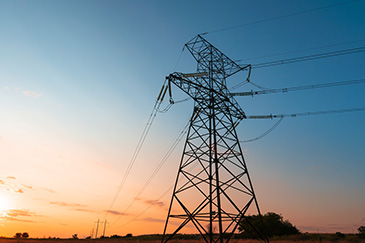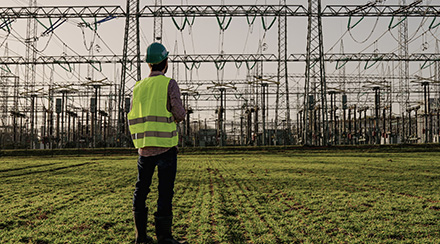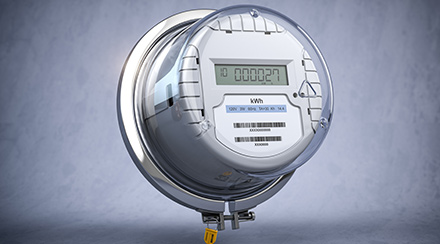How to Read Your Energy Bill
When’s the last time you really looked at your energy bill? With conveniences like paperless billing and autopay, it’s easy to glance at the amount due, schedule a payment and move on. But if you ever want to know exactly where your money is going – or if you might be able to save on energy costs – you should spend a few minutes taking a deep dive into your latest energy bills.
Energy Choice Affects Gas and Electricity Billing

First, it’s helpful to understand how energy choice impacts billing. Most energy customers have some degree of choice in how they’re billed, but the extent of that choice depends on whether the customer lives in a state with a competitive energy market.
Single-Choice Markets
In an electricity or natural gas market where the local utility is the only choice, the utilities handle everything – energy production, transmission, repairs and even billing. Here, billing options are restricted to those offered by the local utility.
Competitive Markets
In a competitive market, the utilities produce and distribute energy, but billing and customer service are sometimes handled by separate companies called electricity/natural gas suppliers or electricity/natural gas retailers.
Retail energy suppliers compete with each other by maximizing customer choice and offering benefits that may set them apart from the competition.
Depending on where you live, your supplier could bill you directly or you could still receive bills from your utility with your supplier listed as a line item. In some areas, you’re able to choose whether you receive your bills from your supplier or local utility. Suppliers
Common Billing Options
Monthly usage: Most customers get billed for the amount of energy they use each month, which results in higher bills in months when they use more energy.
Budget billing: Budget billing is when an energy supplier estimates the amount of energy a customer will use in an entire year and bills an equal amount each month. This can make energy bills more predictable, but accounts may need to be periodically corrected to reflect actual energy use by issuing a credit for overestimation or an additional charge for underestimation.
Assistance programs: Some markets and utilities or suppliers have programs to reduce the energy costs for customers who qualify based on income or other factors.
Customers in single-choice energy markets can’t choose where they buy their energy, so their billing options are restricted to those offered by their local utilities.
How Electricity and Gas Charges Are Calculated
Electricity is measured and billed in kilowatt-hours, expressed on electric bills as “kWh.” A kilowatt-hour is a measure of both wattage and time.
Everything that draws electricity has a wattage, which can be multiplied by the hours used to get the number of watt-hours. If you take the wattage of an appliance, multiply it by the number of hours you run it, and divide the sum by 1,000, you get the number of kilowatt-hours consumed. So when you see the current kWh total on your electric bill, that’s the sum of all the kilowatt-hours consumed by all your appliances, lights and electronics over the course of the month.
Depending on your natural gas supplier, they may calculate your gas charges using any of these three measurements:
- Ccf, which refers to 100 cubic feet of natural gas by volume
- BTU, or British Thermal Unit, which refers to the amount of heat required to raise the temperature of one pound of water by one degree Fahrenheit
- Therm, which is equal to 100,000 BTUs
How to Read Charges on Your Gas or Electric Bill

It takes a lot of manpower and infrastructure to deliver electricity and natural gas to your home, and the costs for those expenses are factored into your monthly bills. So instead of just one charge for the amount of energy you consumed, you’ll see multiple charges covering each part of the process. Here are the line items you’re likely to see on an electric bill:
- Generation charges or supply charges, for producing electricity
- Transmission charges, for transmitting electricity from a power plant to its substations
- Distribution charges, for distributing electricity from substations to homes and businesses
- Customer or account charges, covering various other costs including customer service, administration and billing
- Taxes
Electricity generation, transmission and distribution charges are typically based on your kWh consumption. Customer or account charges are often a flat monthly fee. Depending on where you live or who your electricity supplier is, there may be additional line item charges, such as environmental fees.
Natural gas bills are usually simpler because the natural gas infrastructure is simpler than the electrical grid. But you may see separate charges for gas supply and delivery, which will be based on your consumption, as well as flat-fee customer charges.
Use Your Energy Bills to Track Your Energy Use
To give customers some context to their energy consumption, many utilities and suppliers include some historical account data in their monthly bills. This may be as simple as a reminder of the amount you were charged the previous month, but if you’ve been a customer of the same utility or supplier for a while, you may see a graph showing your monthly energy consumption over the past year or two years.
This information can help customers visualize their energy consumption and decide when to be more diligent about conserving energy. It can also warn homeowners about unusual spikes in their energy consumption that could be caused by aging or malfunctioning appliances.
When In Doubt, Check with Your Utility or Supplier
As you can see, energy utilities and suppliers don’t always use the same terminology, or even the same measurements. So when it comes to your energy bills, it’s always worthwhile to check with your utilities or suppliers themselves for clarification. Visit their websites to check for a billing glossary, sample bill page or FAQ. If you don’t see the information you’re looking for, call the customer service number on your bill to clarify any other billing matters that you don’t fully understand.
Looking for Something Specific?
Select a category to find resources for topics that interest you.
Select Category

Related Articles:

What’s the Difference Between Utilities and Suppliers?
In a competitive energy market, suppliers can compete with each other and often the utility for customers. Learn the differences between utilities and suppliers and the parts that both play in getting energy to your home.
Read Article
What Are the Benefits of a Retail Energy Supplier?
If you live in a state with a competitive energy market, you probably have your choice of several suppliers that are competing to win your business. Learn why signing up with one of these suppliers could benefit you.
Read Article
What Is a Smart Meter?
Did you know energy utilities have been installing “smart meters” on homes for years, replacing old-fashioned electricity meters with the latest technology? Learn all about smart meters, its benefits, and how they can make a difference for you.
Read ArticleMost Popular Articles

Energy Plans to Fit Your Lifestyle
NRG offers electricity and natural gas plans with perks like cash back, travel rewards and more, so you can find a plan that fits your home and family.
How to Read Your Energy Bill
When’s the last time you really looked at your energy bill? With conveniences like paperless billing and autopay, it’s easy to glance at the amount due, schedule a payment and move on. But if you ever want to know exactly where your money is going – or if you might be able to save on energy costs – you should spend a few minutes taking a deep dive into your latest energy bills.
Energy Choice Affects Gas and Electricity Billing
First, it’s helpful to understand how energy choice impacts billing. Most energy customers have some degree of choice in how they’re billed, but the extent of that choice depends on whether the customer lives in a state with a competitive energy market.
Single-Choice Markets
In an electricity or natural gas market where the local utility is the only choice, the utilities handle everything – energy production, transmission, repairs and even billing. Here, billing options are restricted to those offered by the local utility.
Competitive Markets
In a competitive market, the utilities produce and distribute energy, but billing and customer service are sometimes handled by separate companies called electricity/natural gas suppliers or electricity/natural gas retailers.
Retail energy suppliers compete with each other by maximizing customer choice and offering benefits that may set them apart from the competition.
Depending on where you live, your supplier could bill you directly or you could still receive bills from your utility with your supplier listed as a line item. In some areas, you’re able to choose whether you receive your bills from your supplier or local utility. Suppliers
Common Billing Options
Monthly usage: Most customers get billed for the amount of energy they use each month, which results in higher bills in months when they use more energy.
Budget billing: Budget billing is when an energy supplier estimates the amount of energy a customer will use in an entire year and bills an equal amount each month. This can make energy bills more predictable, but accounts may need to be periodically corrected to reflect actual energy use by issuing a credit for overestimation or an additional charge for underestimation.
Assistance programs: Some markets and utilities or suppliers have programs to reduce the energy costs for customers who qualify based on income or other factors.
Customers in single-choice energy markets can’t choose where they buy their energy, so their billing options are restricted to those offered by their local utilities.
How Electricity and Gas Charges Are Calculated
Electricity is measured and billed in kilowatt-hours, expressed on electric bills as “kWh.” A kilowatt-hour is a measure of both wattage and time.
Everything that draws electricity has a wattage, which can be multiplied by the hours used to get the number of watt-hours. If you take the wattage of an appliance, multiply it by the number of hours you run it, and divide the sum by 1,000, you get the number of kilowatt-hours consumed. So when you see the current kWh total on your electric bill, that’s the sum of all the kilowatt-hours consumed by all your appliances, lights and electronics over the course of the month.
Depending on your natural gas supplier, they may calculate your gas charges using any of these three measurements:
- Ccf, which refers to 100 cubic feet of natural gas by volume
- BTU, or British Thermal Unit, which refers to the amount of heat required to raise the temperature of one pound of water by one degree Fahrenheit
- Therm, which is equal to 100,000 BTUs
How to Read Charges on Your Gas or Electric Bill
It takes a lot of manpower and infrastructure to deliver electricity and natural gas to your home, and the costs for those expenses are factored into your monthly bills. So instead of just one charge for the amount of energy you consumed, you’ll see multiple charges covering each part of the process. Here are the line items you’re likely to see on an electric bill:
- Generation charges or supply charges, for producing electricity
- Transmission charges, for transmitting electricity from a power plant to its substations
- Distribution charges, for distributing electricity from substations to homes and businesses
- Customer or account charges, covering various other costs including customer service, administration and billing
- Taxes
Electricity generation, transmission and distribution charges are typically based on your kWh consumption. Customer or account charges are often a flat monthly fee. Depending on where you live or who your electricity supplier is, there may be additional line item charges, such as environmental fees.
Natural gas bills are usually simpler because the natural gas infrastructure is simpler than the electrical grid. But you may see separate charges for gas supply and delivery, which will be based on your consumption, as well as flat-fee customer charges.
Use Your Energy Bills to Track Your Energy Use
To give customers some context to their energy consumption, many utilities and suppliers include some historical account data in their monthly bills. This may be as simple as a reminder of the amount you were charged the previous month, but if you’ve been a customer of the same utility or supplier for a while, you may see a graph showing your monthly energy consumption over the past year or two years.
This information can help customers visualize their energy consumption and decide when to be more diligent about conserving energy. It can also warn homeowners about unusual spikes in their energy consumption that could be caused by aging or malfunctioning appliances.
When In Doubt, Check with Your Utility or Supplier
As you can see, energy utilities and suppliers don’t always use the same terminology, or even the same measurements. So when it comes to your energy bills, it’s always worthwhile to check with your utilities or suppliers themselves for clarification. Visit their websites to check for a billing glossary, sample bill page or FAQ. If you don’t see the information you’re looking for, call the customer service number on your bill to clarify any other billing matters that you don’t fully understand.
Looking for Something Specific?
Select a category to find resources for topics that interest you.
Select Category

Related Articles:

What’s the Difference Between Utilities and Suppliers?
In a competitive energy market, suppliers can compete with each other and often the utility for customers. Learn the differences between utilities and suppliers and the parts that both play in getting energy to your home.
Read Article
What Are the Benefits of a Retail Energy Supplier?
If you live in a state with a competitive energy market, you probably have your choice of several suppliers that are competing to win your business. Learn why signing up with one of these suppliers could benefit you.
Read Article
What Is a Smart Meter?
Did you know energy utilities have been installing “smart meters” on homes for years, replacing old-fashioned electricity meters with the latest technology? Learn all about smart meters, its benefits, and how they can make a difference for you.
Read ArticleMost Popular Articles

Energy Plans to Fit Your Lifestyle
NRG offers electricity and natural gas plans with perks like cash back, travel rewards and more, so you can find a plan that fits your home and family.







